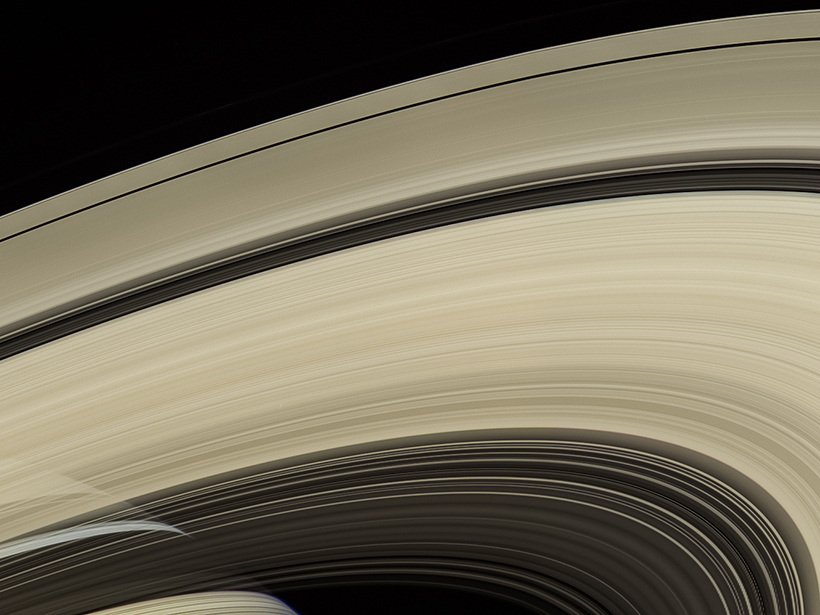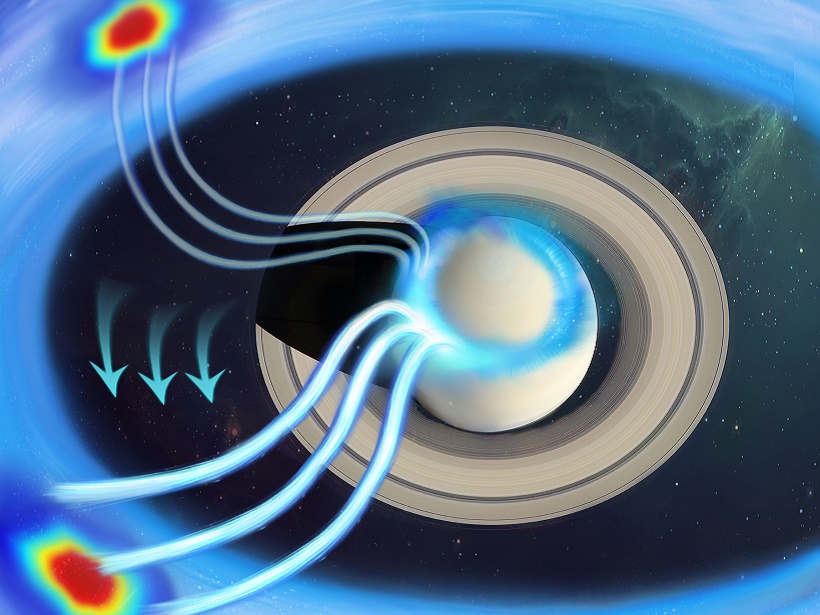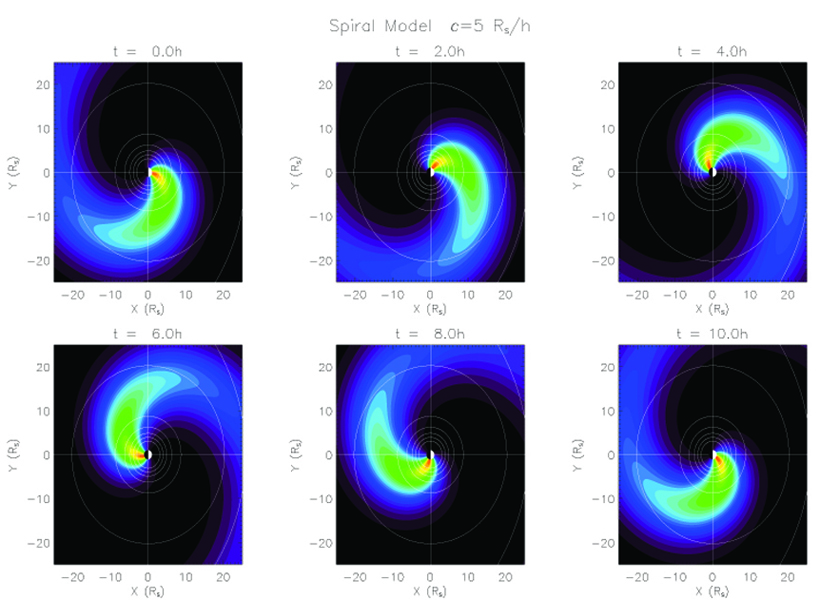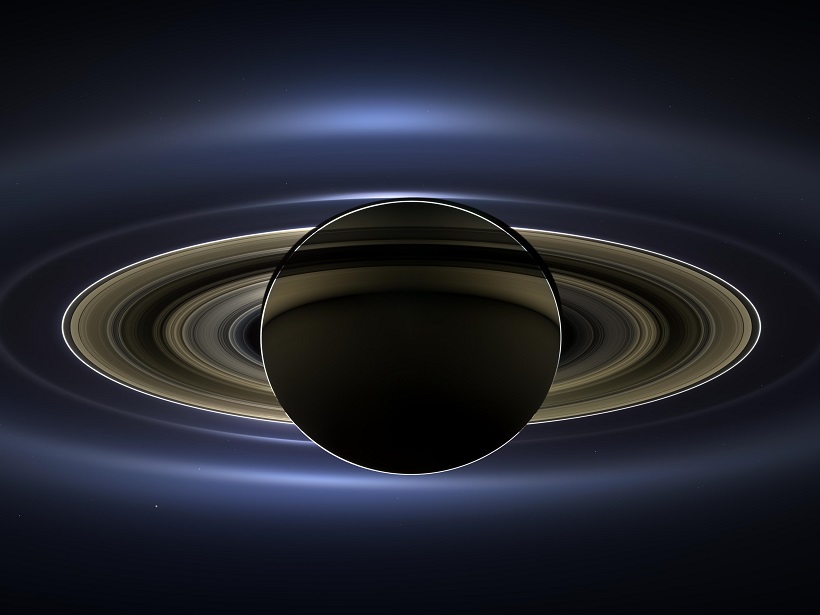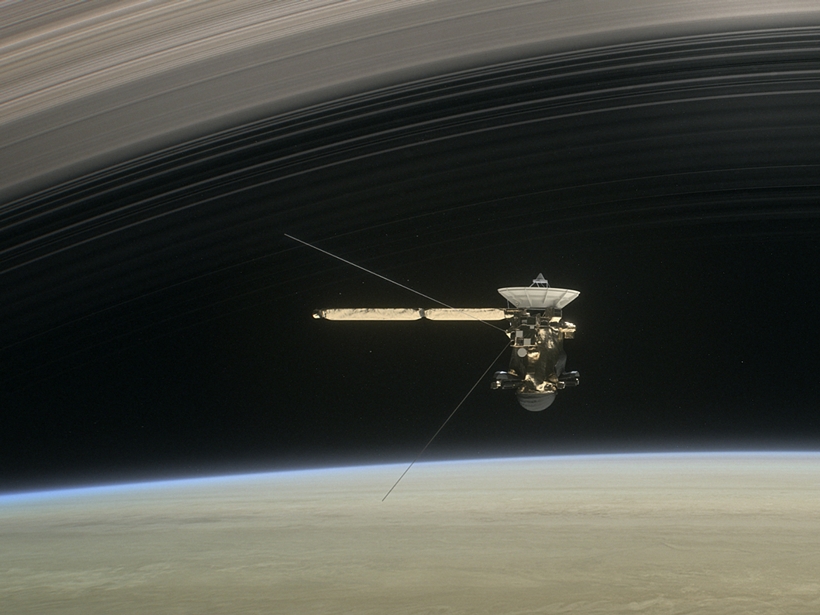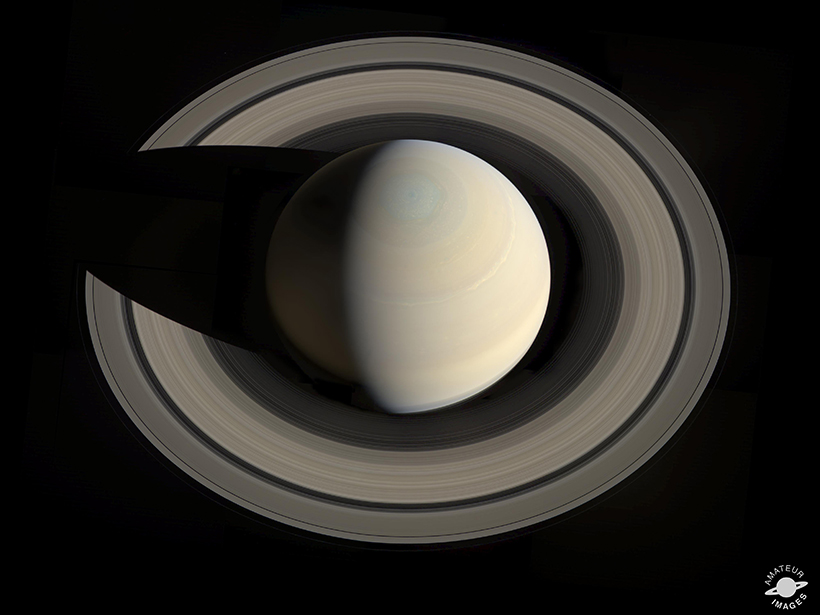Once and future rings: During its final 22 orbits, the Cassini spacecraft provided a completely new look at one of our solar system’s most famous features.
Saturn
Cassini Reveals a Missing Link on Saturn’s Rotating Aurora
The bright aurorae dancing in the sky are produced by charged particles traveling along the magnetic field lines from tens of planetary radii. By why do aurorae rotate at Saturn but not at Earth?
Earth-like Oscillations Detected in Saturn’s Stratosphere
By comparing Cassini observations spanning ten years, Saturn’s equatorial oscillation is shown to have similarities to Earth’s Quasi-Biennial Oscillation and Semi-Annual Oscillation.
A Close-in Look at Saturn’s Periodic Space Bubble
When it comes to Saturn’s space environment, summer wins over winter in controlling the periodic flows of electrically charged particles and magnetic fields.
Probing the Cusps of Saturn’s Magnetic Field
Data from the Cassini spacecraft show that the cusp regions of Saturn’s magnetic field—where it connects to the Sun’s magnetic field—have similarities to Earth’s and also intriguing differences.
Cassini’s Legacy in Print
With over 750 papers published in AGU journals based on Cassini-Huygens mission data, three editors select some of the most noteworthy.
Cassini Plunges into Saturn, Ends a 20-Year Mission
NASA’s Jet Propulsion Laboratory streamed the spacecraft’s final moments live, allowing the public to listen to the mission’s end.
A Wealth of Science to Come During Cassini’s Final Orbits
NASA’s spacecraft will continue to unlock Saturn’s mysteries up until the moment it burns up in Saturn’s atmosphere.
Saturn Unveiled: Ten Notable Findings from Cassini-Huygens
The soon-to-end NASA mission to Saturn changed the way we think of habitability beyond Earth, opened our eyes to dynamics in the gas giant’s atmosphere, and more.
Where Are the Electrical Currents in the Enceladus Plume?
A plume of water ice that escapes Saturn’s moon Enceladus should be coursing with electrical currents, but data are mixed. Now simulations suggest that a sticky dust cloud may shield signals.

